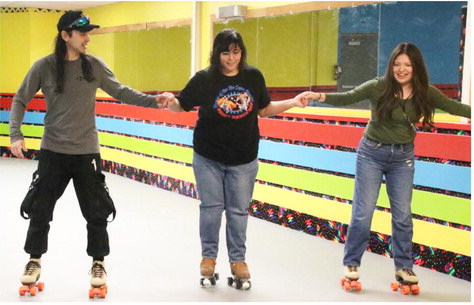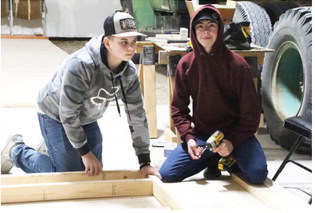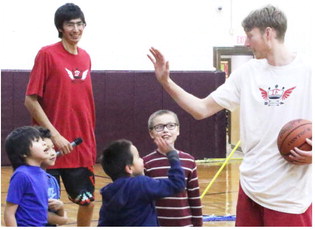Montana COVID FAQ Facts, Resources
IS IT CALLED THE CORONAVIRUS, OR COVID-19, OR WHAT?
Coronaviruses are a particular family of viruses, and according to the National Institutes of Health, there are hundreds of them that circulate in animals including bats, pigs and camels. The specific coronavirus at the root of the current pandemic is known as SARS-CoV-2. SARS stands for “severe acute respiratory syndrome.” When you hear it referred to as a “novel” coronavirus, that’s another way of saying it’s new. COVID-19 is the name given to the disease caused by SARS-CoV-2, which typically presents as a respiratory infection.
WHAT’S GOING ON WITH COVID-19 IN MONTANA RIGHT NOW?
COVID-19 cases in the state began climbing again in August. The number of new cases has been fluctuating daily, with spikes as high as 1,300 or 1,400, but the seven- day average is hovering around 900. That’s in fairly stark contrast to the national trend. According to the New York Times, average daily cases dropped 19 percent nationally in the first two weeks of October. As of Oct. 11, the paper listed Montana as having the second-highest average daily cases per 100,000 people in the nation, as well as the second-highest daily average of hospitalizations per 100,000 people.
WHAT CAN I DO TO REDUCE MY RISK OF GETTING COVID-19?
Every medical expert Montana Free Press spoke with said the most important thing you can do is get vaccinated. Beyond that, there are lots of steps you can take to mitigate your risk of contracting the virus. Those include washing your hands regularly, maintaining six feet of social distance from people you don’t live with, and avoiding crowded indoor spaces and poorly ventilated areas. The Centers for Disease Control also says that if you have to cough or sneeze, you should cover your mouth and nose with a tissue or your elbow and immediately wash your hands afterwards.
The most notable precaution, and the one we’ve all become familiar with over the past year and a half, is wearing a face mask. MTFP wrote about the science behind masking in September, but health care providers continue to stress that face coverings are a safe and easy method of protecting yourself and those around you from COVID-19.
“We’re just going to keep putting it out there,” Montana Nurses Association executive director Vicky Byrd said. “Wear a mask, whether you’re vaccinated or not.”
IS THERE A PARTICULAR TYPE OF MASK I SHOULD USE?
Among its many COVID-19 related resources, the CDC has a webpage solely dedicated to the various kinds of masks people might use during the pandemic. Those range from disposable surgical masks — the blue ones you occasionally see lying in garbage cans or on sidewalks — to the heavier-duty N95 masks, which are technically called respirators, not masks. According to numerous sources including Johns Hopkins University, masks should be made with at least two layers of fabric and cover the nose, mouth and chin without any large gaps. The CDC recommends that if you’re going to use a neck gaiter as a facial covering, you should fold it over into two layers.
Health care providers are continuing to study different types of masks to learn more about their varying levels of effectiveness. For now, Byrd’s advice is “something is better than nothing.”
HOW CAN I KEEP MY CHILD SAFE?
The same methods that work for adults work for children, too. In fact, some public school districts have made masking a requirement. Not everyone is OK with that, but it does conform with the CDC’s current recommendations for K-12 schools.
WHEN CAN I GET TESTED FOR COVID-19?
Because Montana is dealing with a high volume of COVID-19 cases right now, the Montana Department of Public Health and Human Services is prioritizing COVID tests at the state lab. That means if you are symptomatic or hospitalized, or are involved in a large-scale outbreak of the virus, your test will be top priority. According to information obtained from DPHHS via email, asymptomatic patients, individuals who are participating in surveillance testing, people who are undergoing elective surgery and people who are planning to travel are next on the priority list. DPHHS has also helped enable longterm care and assisted living facilities to ship tests directly to state-contracted labs for processing, and is working to beef up rapid on-site testing for schools as well.
“DPHHS is providing funding to K-12 school districts and private schools to support staffing, equipment and supplies to conduct COVID-19 screening/testing of school staff and students,” DPHHS communications director Jon Ebelt wrote via email. “DPHHS is also providing schools directly with COVID-19 rapid antigen test kits. The goal of this is to prevent and mitigate the spread of COVID-19 among students and school staff to help keep schools safe and open.”
CAN’T I JUST TAKE A TEST AT HOME?
This year, the U.S. Food and Drug Administration has approved several at-home rapid test kits for COVID-19, which are designed to be inexpensive, easy to use and widely available over the counter. The manufacturers of these tests are still working to keep up with demand, but the White House recently announced it plans to invest $1 billion to quadruple the number of kits on shelves by the end of the year. Check with your local drugstore for availability in your area.
HOW CAN I GET THE COVID-19 VACCINE?
There are a lot of ways to get vaccinated in Montana right now, and if you’re 16 years old or older, you’re eligible to get the shot (the Pfizer vaccine has also been approved for children as young as 12). Some local health departments around the state are continuing to offer weekly public vaccine clinics this fall, and hospitals and pharmacies throughout the state are still booking appointments for people looking to get vaccinated. The CDC has a dedicated search engine that can help you locate the nearest vaccination options in your area at vaccines.gov.
WHEN CAN I GET A VACCINE BOOSTER?
So far, the only booster that’s been granted emergency use authorization by the FDA is for the Pfizer vaccine. Only certain groups are currently eligible, including patients 65 and older, patients between 18 and 65 with underlying medical conditions, and those age 18 to 65 who are at greater risk of COVID-19 exposure due to their occupational setting. People seeking to get the booster must have received the Pfizer vaccine to start with, and can only receive the booster six months after their second Pfizer shot. Local health departments in Montana’s larger cities are already offering boosters to eligible individuals. A complete list of county and tribal health departments, including contact information, can be found on the DPHHS website.
To date, boosters for the Moderna and Janssen vaccines have not yet been authorized, but the FDA vaccine advisory committee is scheduled to meet this week to discuss those boosters, as well as data regarding use of the Pfizer vaccine in children age 5-11.
SHOULD I BE TAKING ANY ADDED PRECAUTIONS IF I’M PREGNANT?
While researchers are still working to understand the impacts of the novel coronavirus on pregnancy, according to the American College of Obstetricians and Gynecologists reports do suggest that pregnant women are at higher risk of more severe illness with COVID-19. The ACOG has its own FAQ addressing a long list of issues related to COVID-19 and pregnancy. Those include all the health precautions mentioned above, as well as keeping all prenatal and postpartum care visits and following up with your doctor about any questions you have on the subject.
CAN I TAKE ANYTHING AT HOME FOR COVID-19?
A number of other home interventions have been rumored to help prevent and treat COVID-19 infection over the past year, including hydroxychloroquine and, more recently, the horse deworming agent ivermectin. Carley Robertson, a family medicine specialist in Havre and president of the Montana Medical Association, said those therapeutics have been “really debunked in the medical literature” and the FDA is not recommending their use.
“[People] should not go down to Big R or North 40 or whatever and buy ivermectin that is designed for livestock. They should not be doing that,” Robertson said. “Those are formulated for veterinary use. They are not formulated for human use.”
IF I DO GET COVID-19 OR DEVELOP SYMPTOMS, WHAT SHOULD I DO?
Montana Hospital Association President Rich Rasmussen told MTFP that if you’re feeling any symptoms of COVID-19, it’s important that you get tested. If you do have it, he said, your condition could deteriorate rapidly, and you have the ability to spread the disease to others. The quicker you get on top of the situation, the faster health care professionals can help you and keep the illness from getting worse.
WHAT SORT OF TREATMENT WILL I RECEIVE IF I DO GET COVID-19?
That’s going to depend heavily on a number of factors, including how severe your symptoms are and whether you have any underlying medical conditions that could exacerbate the situation. Robertson said most people who get COVID-19 won’t end up in the hospital. For patients who are able to deal with the disease at home, providers may recommend extra doses of vitamin C, vitamin D, zinc or melatonin to aid the immune system. Robertson said a two-week regimen of low-dose aspirin is routinely used to reduce certain symptoms such as nausea, and occasionally patients may be asked to come into a clinic for a liter of IV fluid. Consult with your physician before starting any medication regimen.
If you are not vaccinated and are at risk of progressing to a more severe case of COVID-19, Butte family physician Wendy Grace, who has been treating COVID patients both in and out of hospital settings, said you may also receive an infusion of monoclonal antibodies, a treatment the FDA approved for emergency use last fall. That may also be the case for people with diabetes, high blood pressure, or people who are immunocompromised. However, Rasmussen cautioned that Montanans shouldn’t count on the treatment being available, which is one of several reasons why he encourages people to get vaccinated.
“There is no guarantee that the hospitals will have the monoclonal antibodies to treat you. They’re in short supply,” Rasmussen said. “[Montana] is doing a great job of distributing them across the state, but at any given moment, you don’t know what that supply is at that particular facility that you present to.”
WHAT IF I DO GET HOSPITALIZED?
According to Robertson, most COVID-19 patients who are sick enough to require hospitalization are typically put on oxygen and receive a few days of steroids. Treatment can involve a host of health care professionals including a physician, a team of nurses, a pharmacist, a respiratory therapist and a physical therapist. Because COVID-19 can have a wide range of negative effects on various organs and bodily systems, those professionals will be on alert for any complications that might arise.
“COVID can cause kidney failure, it can cause respiratory failure,” Grace said. “It can cause strokes, it can cause blood clots in your lungs. All of these things typically require support in the hospital.”
Rasmussen said COVID-19 patients who are hospitalized should also expect to be separated from the rest of the hospital population to reduce the spread of the virus. For the most part, he added, how the hospital handles your situation when you walk in the door will likely be the same throughout the state.
“We know that every patient is at risk for a potential bad outcome because of the severity of this illness,” Rasmussen said. “So whether you’re in a small facility or you’re in a larger community hospital, the approaches are going to be the same: evaluating the level and the acuity of the disease and immediately delivering appropriate resources to address the condition.”
I’VE HEARD SOME HOSPITALS ARE SO SLAMMED THEY’RE USING “CRISIS STANDARDS OF CARE.” WHAT DOES THAT MEAN?
Crisis standards of care are a set of guidelines that health care facilities use to determine how to allocate resources to patients when those resources are limited. If a hospital has two patients in need of ventilation and only one ventilator, Rasmussen said, they have to determine which of those patients has the higher likelihood of surviving if put on ventilation. Montana’s crisis standards were carefully developed by practicing physicians, medical ethicists and clergy to be as “compassionate” as possible, he added, but it’s still “a tough decision for clinicians to find themselves in.” Even so, the uptick in COVID-19 hospitalizations this fall, coupled with the need to continue treating pregnant mothers, grandparents suffering heart attacks and children with broken bones has put health care facilities across the state in a bind.
“Our ICU rooms are at capacity,” Rasmussen said. “And I believe for the last several weeks, more than 50 percent of our patients in our ICU were COVID patients. We do have a large supply of ventilators and we have not exceeded our ventilator capacity, but we have exceeded, in many instances, our capacity within these intensive care units.”
WILL I GET SICKER IF I GET THE DELTA VARIANT?
Based on what she’s read, Grace said the short answer is no. However, Delta is significantly more transmissible, making it more likely that someone might catch it.
“It’s approximately 10,000 times more transmissible,” Grace said. “So it means more people will get sick in your immediate circle if you are infected … It’s still COVID. It’s still bad.” According to the American Society for Microbiology, the existing COVID-19 vaccines are largely effective against the Delta variant.
IS THE RISK AND TREATMENT FOR CHILDREN DIFFERENT?
Kalispell pediatric hospitalist Courtney Paterson said that while it’s true children generally don’t get as sick as adults when they get COVID-19, they can still “get pretty sick.” She’s cared for a range of young coronavirus patients from newborns with fevers to teenagers who have ended up in the ICU on ventilators and multiple medications. It may be less common, she said, but it’s “certainly possible.”
“The biggest thing is that when kids are critically ill like that, they truly need a dedicated pediatric space,” said Paterson, who also serves on the Montana Chapter of the American Academy of Pediatrics’ executive committee. “And so this isn’t as simple as if a 12 year old gets critically ill, we’ll just put them in the adult ICU with all the other adult COVID patients. That’s really not our best practice of care.”
Paterson explained that treating a child with COVID-19 requires a dedicated pediatric team, and specialized strategies to help make them more comfortable. At Logan Health, she said, that has included allowing parents to be at their child’s bedside and staff wearing badges displaying their faces without personal protective equipment. Windows in pediatric spaces have also allowed health care workers to interact with young patients safely while their faces are uncovered.
“When we’re outside the room with our PPE off, we can actually play games through the glass so that they know what we look like without all that stuff on,” Paterson said. “It is a process to constantly reassure patients they’re in a safe place so that we try to alleviate anxiety.”
One specific COVID-19 associated issue that health care workers have to be on the lookout for with pediatric patients is multisystem inflammatory syndrome in children, or MIS-C. As the COVID-19 infection begins to wane, Paterson said, a child’s immune system can become confused and begin attacking the body instead of the virus. That can result in ongoing fever, stomach pains, vomiting and skin rash. It’s rare, Paterson added, but it’s where hospitals have seen the most morbidity among children from COVID-19.
“We had quite a few kids here in Kalispell in the last year that have come in with that and needed ICU-level support because their body is so inflamed [that] it’s attacking all of their organs, that they need critical care to be able to get through that,” she said.
I HAVE MORE QUESTIONS. WHO SHOULD I TALK TO?
Unanimously, everyone interviewed for this story agreed you should consult your primary care physician. And if you don’t have one, they recommend you get one.
“You start with your provider,” Byrd said. “Don’t go to Google, don’t go to Snapchat, don’t go to Facebook.”


